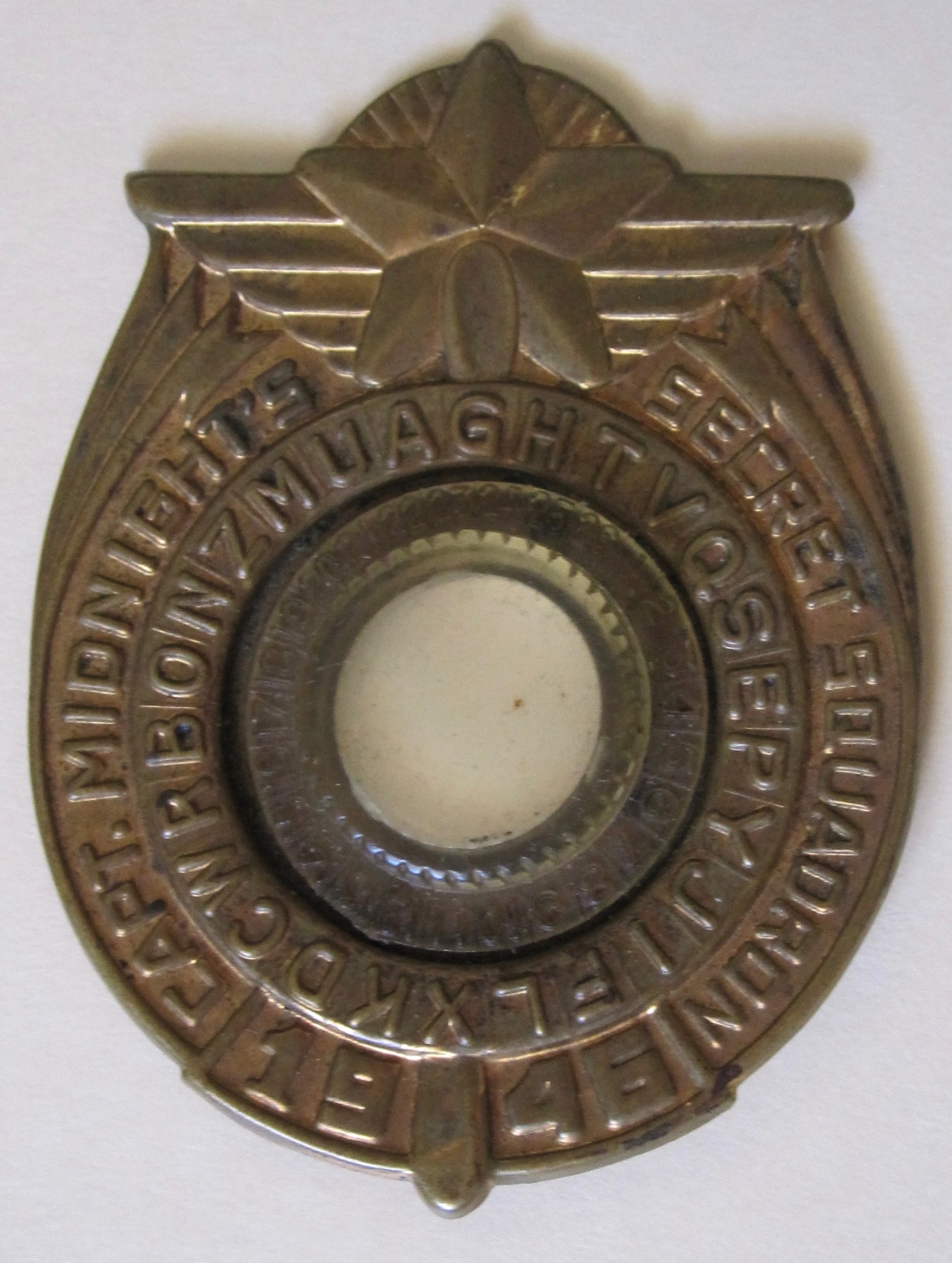Exercises 4.3 Exercises Set 7
Investigation Work
1.
Finish all investigations from in-class activities.
Computation Based Exercises
2.
Determine the total number of ways to use 6 plugs to swap letters from the standard alphabet of of 26 letters.
3.
Determine the total number of initial settings for an Enigma machine, if there is a set of 3 rotors to be placed into the machine (in any order), 26 possibilities for each starting letter on each rotor, and 6 plugs are used to swap letters. (This was the situation for much of the Polish work on breaking the Enigma machine.)
4.
Suppose an Enigma type devise is created for an 8 letter language, A,B,C,D,E,F,G,H. Suppose there are four rotors and three of them are used in the machine.
How many ways are there to place three rotors in the machine?
How many starting keys would there be? (I.e., initial locations of the rotors)
How many ways are there to use one cable to swap one pair of the 8 letters?
How many ways are there to use two cables to swap two pairs of the 8 letters?
How many ways are there to use three cables to swap three pairs of the 8 letters?
Suppose you do not know how a rotor is wired. How many ways are there to wire a single rotor? That is, how many ways are there to connect the 8 letters to each other?
5.
Using the paper enigma with the settings of rotor I, II, III (in that order from left to right) and the initial rotor starting positions of AAA. Decrypt the following six letter groups. Remember to move the right rotor one letter BEFORE encrypting each letter. And restart the rotors to AAA for each six letter group. The decryptions are all repeated groups of three. That is, the first group BOXGDT decrypts to AIRAIR. Do at least a few of these by hand, but you can check your work with the simulator in Sage Computation 4.4.2.
| CT | PT | CT | PT | CT | PT |
| BOXGDT | AIRAIR | SILZAY | \(\qquad \qquad\qquad\) | JZFNXP | \(\qquad \qquad\qquad\) |
| AYYCHA | \(\qquad \qquad \qquad\) | WBTHPJ | OPCFMN | ||
| QAEBIM | PVQDLD | ZHPRJX | |||
| MCWLEB | DUSOKU | RFUYVQ | |||
| FWIWFZ | YKBSGI | KGGEQL | |||
| EDOTOE | TEJMUV | GSRPTS | |||
| XLKARC | LMHXZR | NQDVCH | |||
| IJNKSK | CNVIWF | UTAJYG | |||
| HRMQNO | VXZUBW |
6.
Use the mini enigma simulator in Sage Computation 4.2.10 with the default setting to perform the encryptions below.
-
Use the mini-enigma to encrypt the following groups of two letters, starting at step 0 for each group of two letters.
AA BE BB \(\qquad \qquad\) CC \(\qquad \qquad\) DD \(\qquad \qquad\) EE \(\qquad \qquad\) FF \(\qquad \qquad\) -
Find the permutation for the letters A,B,C,D,E,F given by step 0 of the mini-enigma.
\(P_0=\)
A B C D E F B -
Find the permutation for the letters A,B,C,D,E,F given by step 1 of the mini-enigma.
\(P_1=\)
A B C D E F E Find \(P_1(P_0)\text{.}\) That is, find the permutation given by applying \(P_0\) first and then \(P_1\text{.}\) What do you notice?
How does \(P_1(P_0)\) relate to the encryptions in part (a)? Explain why this happens.
Writing Based Exercises
7.
Determine the number of different plugboard settings (the ways to swap letters) for swapping \(k\) pairs of letters with \(k\) cables from the standard alphabet of 26 letters for all possible \(k\) with \(1 \leq k \leq 13\text{.}\) Write a for loop in Sage to calculuate this, and find the values for all possible choices of \(k\text{.}\) Submit your Sage code and your answers. Which \(k\) produces the largest number of plugboard settings? Is that surprising? Why?
8.
Use the plaintext-ciphertext pairing in Exercise 4.3.5 to find letterchains.
Find the letterchains connecting the first and fourth letter. That is, the first ciphertext has the letter chain B-G. Then a later ciphertext has a letter chain G-P, giving B-G-P. Continue until it cycles back to B and then find all other cycles in this manner.
Repeat the above for letter chains for the second and fifth letters.
Repeat for letter chains for the third and sixth letters.
What do you notice about the cycle structures in each of the previous three parts of this problem?
Enrichment Opportunities
9.
Read the Wikipedia entry about Alan Turing in preparation for our discussion tomorrow. Write a paragraph about you found interesting about Alan Turing. https://en.wikipedia.org/wiki/Alan_Turing
